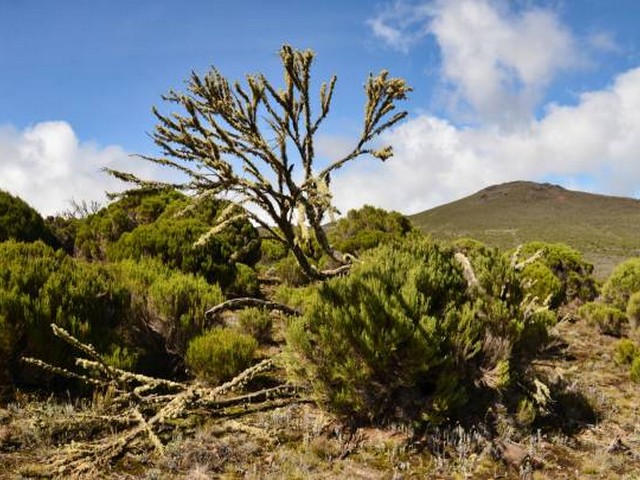Nature and Wildlife Tours on Kilimanjaro Routes: A Journey Through Africa’s Eden
Welcome to a thrilling journey where the sky meets the land, and nature’s palette unveils its most intricate designs—welcome to Mount Kilimanjaro, the towering pride of Tanzania. With Kilimanjaro Centre for Trekking and Ecotourism (KCTE), you’re not just planning a climb; you’re embarking on an unforgettable exploration of wildlife and florae on Africa’s highest peak. Whether you’re an avid trekker, a nature lover, or a photography enthusiast, Kilimanjaro offers more than just trails; it offers a vibrant spectacle of life in its purest forms.
Why Choose Kilimanjaro for Your Next Nature and Wildlife Tour?
Mount Kilimanjaro is not only famous for its snow-capped summit but also for the diverse ecosystems that line its slopes. From lush rainforests to alpine meadows, and arctic summits, each altitude presents its own universe of flora and fauna. Observing this ecological cornucopia while ascending its routes provides an exceptional opportunity to connect with nature at every step.
The Forests: A Bird-Watcher’s Paradise
Begin your trek through the dense, misty forests that cloak Kilimanjaro’s lower elevations. This verdant environment is alive with the chirps and melodies of numerous bird species, including the Kilimanjaro white-eye and the Hartlaub’s turaco. The towering trees and cooler temperatures form a serene atmosphere, perfect for those hoping to escape into nature’s quiet.
The Moorland: A Floral Spectacle
As you ascend, witness the dramatic shift in scenery as you enter the moorland zone. This area is renowned for its unique alpine flora, including the giant groundsels (Senecio kilimanjari) and the striking red-hot poker (Kniphofia thomsonii). The open landscape offers panoramic views and is a fantastic spot for sunset and sunrise watchers.
The Alpine Desert: Survival of the Fittest
Further up, the landscape transforms into an alpine desert, where vegetation is sparse but fascinating. The resilience of life here is astounding—small shrubs and plants eke out an existence, and so do some hardy insects and birds, attuned to the harsh conditions. This zone offers a stark beauty that contrasts with the lushness below, providing insights into the adaptability of nature.
The Summit: The Arctic Zone
Reaching the summit zone, you encounter an almost extraterrestrial habitat. Despite the extreme conditions, you might spot some of the most hardy species, including the Kilimanjaro mouse. The summit itself, Uhuru Peak, offers more than just breathtaking views; it provides a profound sense of accomplishment and connection with the earth’s majestic powers.
The Benefits of Booking with KCTE
When you choose Kilimanjaro Centre for Trekking and Ecotourism, you opt for a partner who values sustainability, safety, and enriching travel experiences. Our expert guides are not only trained in safety protocols but are also knowledgeable about the local wildlife and ecosystems. We ensure that your journey is both exciting and educational, leaving you with not just photographs, but also stories and knowledge to share.
Tailored Wildlife and Nature Tours
At KCTE, we recognize that every traveler is different. We offer customized tours that focus on nature and wildlife, suited to your fitness level and interests. Whether you want to spend extra time bird watching or photographing the landscape, we can adjust the itinerary to meet your needs.
Responsible Trekking
Sustainability is at the heart of all we do. We practice leave-no-trace principles and support local conservation efforts, ensuring that the beauty of Kilimanjaro is preserved for future generations. Booking your tour with KCTE means supporting eco-friendly tourism.
Comprehensive Support
From the moment you inquire until you descend the mountain, KCTE provides seamless support. Our pre-trek training and detailed briefings ensure that you’re fully prepared for the journey ahead. Plus, our porters and guides are with you every step of the way, enhancing your safety and comfort on the mountain.
Frequently Asked Questions
What is the best time to visit Kilimanjaro for nature and wildlife tours?
The best times are during the dry seasons, from late June to October and from late December to mid-March. These periods provide the clearest days for wildlife viewing and trekking.
How physically demanding are the nature and wildlife tours?
Kilimanjaro is a high mountain, and its routes vary in difficulty. We offer tours from moderate to challenging and provide detailed pre-trek fitness guidelines.
Can I take my children on a nature tour on Kilimanjaro?
Yes, children from the age of 10 and above can join our nature tours, provided they are adequately prepared and accompanied by an adult.
What wildlife might I see on Kilimanjaro?
Apart from the diverse bird species and unique alpine flora, you might see blue monkeys, Colobus monkeys, smaller mammals like the Kilimanjaro mouse, and a variety of insects.
Why Wait? Book Your Kilimanjaro Adventure Today!
Exploring Mount Kilimanjaro’s diverse habitats offers more than just a climb; it’s a journey through a living museum of nature’s finest exhibits. Kilimanjaro Centre for Trekking and Ecotourism (KCTE) is committed to providing you an enriching, safe, and sustainable adventure on one of the world’s most iconic mountains. Contact us today to book your nature and wildlife tour and take the first step towards an adventure that will leave you with memories and insights to last a lifetime. Embrace the wilderness, challenge your spirits, and discover the magic of Kilimanjaro with KCTE.




